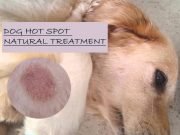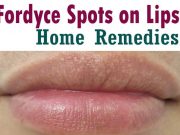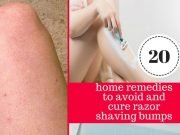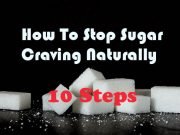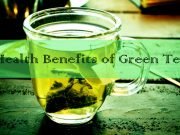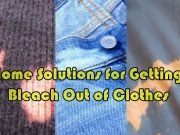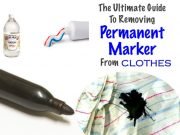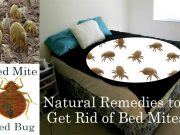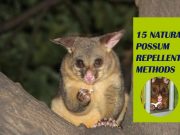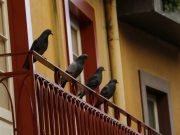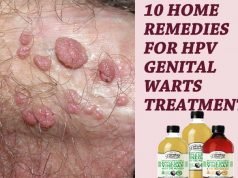The slightest mark on our skin, a small bump or a rash can have a big impact on your personality. Blame it on the media or our own unrealistic expectations of flawless, glowing skin – but first impressions matter. However, that doesn’t change the fact that we’ve all had skin problems and infections at some point in our life. Molluscum contagiosum is a common skin problem, especially among children and in some cases, the condition affects sexually active adults. Read on to know all about this skin condition and some home remedies you can use to tackle it.
What is Molluscum Contagiosum?
Molluscum contagiosum is a common skin conditions that starts out as small spots which soon turn to bumps and red warts if left unchecked for long. In the initial stages, the spots might not cause any pain or irritation. This might make you underestimate the severity of the problem. Molluscum Contagiosum is a viral infection that produces several lesions and clusters of varying sizes on the upper layer of the skin. It pops up a couple of weeks after being exposed to the virus. The bumps have a small inflamed, red indentation on the top and appear pinkish or flesh-colored.
What Causes Molluscum Contagiosum?
The main cause behind molluscum contagiosum is a virus of the same name, the molluscipoxvirus (MCV). It is a highly contagious condition and can spread through physical, sexual and indirect contact (i.e. sharing towels, soap etc.). The bumps may appear all over your body, particularly on the face, arms neck, eyes, and armpits. You can even find rashes along the inner thigs, lower abdomen and genitals. Here are a few ways you can contract this disease;
- Unhygienic lifestyle
- Unprotected sex with multiple sexual partners
- Weak immunity
- Sharing clothes and items with infected people
- Exposure to contaminated surfaces
- Pre-existing skin infections like eczema
- Tropical climatic conditions
Does Molluscum Contagiosum Itch?
Then molluscum contagiosum bumps can cause mild itching and inflammation. But it is nothing to worry about. There are no visible symptoms in the initial stages, though as the days pass by the itching and slight discomfort may grow. The bumps appear everywhere in the body, including the sensitive areas like your armpits and genitals. Any sort of lesions in your privates would cause rashes and irritation. And in case your child experiences severe itching and pain, consult a doctor ASAP.
Some Common Signs and Symptoms to Look Out For
The tiny red bumps caused by molluscum contagiosum virus is often mistaken for STD like herpes, chickenpox, warts or even skin cancer. And while the condition is nowhere close to being as dangerous as the ones mentioned above, it can get pretty serious if the signs are ignored. The skin bursts into rashes and lesions a week after being exposed to the virus. Listed below are a few tell-tale symptoms of the condition that you should be aware of:
- Pink bumps on the skin (babies and children are susceptible to the infection). The round, dome-shaped bumps blend onto the skin can be spotted only through the slight indentation on the top
- Mild itching and discomfort
- Skin is sensitive to touch and heat
- Faint feverishness, nausea, and dizziness
Why does Molluscum Contagiosum Affect Kids?
Molluscum contagiosum usually affects young children and babies. This is because unlike adults, kids have a weaker immune system and are vulnerable to the virus attack. Also, kids are exposed to a lot more viruses and contamination. Be it playing with other infected kids in the playground or getting grime all over – children are more susceptible to bacterial and viral infections. As a parent, it is your responsibility to ensure the proper hygiene of your child.
How to Remove the Skin Spots Using Herbal Treatment?
The remedies discussed below are prepared from common ingredients found at home. And while most of these hacks don’t completely cure the condition, they sure have a soothing effect on the itching and discomfort. The bumps and scars go away in their own time, these hacks make the process easier.
1. Trust Neem’s Powers
Neem is often used in ancient Ayurvedic medicine for curing skin conditions like chickenpox and acne. The anti-bacterial and anti-viral properties make neem a great molluscum cure. It boosts your immunity system and strengthens your body from within. Soak some neem leaves in water and chew them every morning on an empty stomach. You can also prepare a neem bath by soaking some neem leaves and Epsom salt in lukewarm water. Soak your body in for 30-minutes and then pat it dry with a cotton towel.
2. Try Garlic
Chewing a few garlic cloves every morning and downing it with a glass of water is great for your immunity. You can even make a paste by grinding 3-4 garlic cloves and apply it to the bumps. Rinse it off with cold water once the paste has dried up to reduce swelling and redness. Garlic is rich in components like sulfur, allicin, and calcium, and has antibiotic and antimicrobial properties. Also, it prevents fungal growth and heals the residual scars effectively.
3. Use Australian Lemon Myrtle
Australian lemon myrtle contains many antifungal properties that keep the viruses and bacterial attacks at bay. It can also be used as a good exfoliator to clear away all the dead cells blocking the pores of your skin. The open pores can now absorb more moisture and wash off the grime away better. Grind some lemon myrtle leaves, add a tsp of olive oil and mix it to a paste-like consistency. Apply this paste directly onto the red bumps and leave it for a few minutes.
4. Experiment with Oatmeal Baths
Nothing soothes those itchy bumps better than a colloidal oatmeal bath. To prepare the soak you need to take a cup of colloidal oatmeal (that’s finely ground grains of oats) and add it to a lukewarm bath. You can even grind some oats, the old-fashioned way, i.e. in a food processor. The water turns milky-white and has a thick slimy consistency. Oatmeal is rich in triglycerides, a fatty acid known for its moisturizing and anti-inflammatory properties. Soak your body in for 10-15 minutes, then take a regular shower.
5. Oregano Oil – Try It Now
Oregano, a common kitchen ingredient is more than just an Italian spice used to add flavor to your food. The oil extracted from this spice is a simple and effective molluscum treatment. Oregano is rich in anti-oxidants like terpenes, thymol, Rosmarinus and carvacrol acid. These components reduce skin irritation and inflammation considerably, boost your immunity and combat the virus attack. Mix oregano oil, almond oil, and olive in equal proportions. Rub it over the affected area for a few minutes and then rinse it with cold water.
6. Coconut Oil – Inexpensive and Quick Cure
Coconut oil is a great moisturizing agent that protects your skin from bacterial attacks and infections. Coconut oil is also good for body massages, exfoliating your skin and cleaning away the grime and dust accumulated on your skin. You can apply coconut oil directly on the bumps several times a day. Or you can mix in some honey and essential oils extract to the oil to prepare a wonderful soak. We highly recommend coconut oil for molluscum contagiosum.
7. Elderberry Seed Extract – Instant Relief, Guaranteed
Elderberry extracts and seeds when applied as a paste or used as a soak can work wonders in treating the bumps on your skin. Mix 2 tsp of elderberry extract in 3 tsp of water, apply the mixture to the affected area and let it sit for a few hours. You can also prepare a concoction of elderberry mixed in a glass of warm water. Drink it on an empty stomach for a week to reduce the rashes and itchiness. Elderberry is used in many traditional medicines to fight cholesterol, boost immunity and improve eyesight. It is rich in anti-oxidants, vitamins, and minerals that help prevent cell damage.
8. Apple Cider Vinegar – The Wonder Solution
Apple cider vinegar, when used in dilution, is effective for treating skin conditions. You can also apply undiluted ACV (albeit in small quantities) using a cotton cloth on the affected area. Don’t leave the solution on your skin for a long time as extended exposure to ACV can aggravate the irritation and itchiness. However, ACV doesn’t have any serious side-effects on the skin, other than slight discomfort and a burning sensation when used in its undiluted form. You can add some baking soda or Epsom salt to the mixture for better, quicker results.
9. Use Sea salt For Instant Relief
Sea salt is one of the easiest, most affordable of home remedies on our list to get rid of molluscum contagiosum. Sea salt is a common kitchen ingredient that’s used in both flavoring food and preparing baths and soaks for sore muscles. Now, the bay salt (as called by the English), is also used for medicinal purposes in treating several conditions. Mix 2 tsp of sea salt in 3 tsp of water, apply this paste on the bumps, let it dry for half an hour before rinsing it off with cool water. For best results, repeat the process 2-3 times a week.
10. Tea tree Oil – A Natural Cure
Tea-tree oil is known for its anti-bacterial and soothing properties. Considered to be one of the essential oils, the fragrant extract can cure even the harshest of bumps, acne, and rashes. Tea tree oil when mixed with lavender, sandalwood, and other extracts can reduce skin irritation and itchiness considerably. Gently dab some oil onto the bumps twice or thrice a day with a cotton ball. Then rinse it off with clean lukewarm water. Repeat this process for a week and you’ll see how the spots vanish, leaving your skin smooth and spotless.
Note: If these home remedies don’t yield any observable benefit in 2-3 weeks, consider medical solutions to the problem.
Molluscum Contagiosum Treatment in Children
Homemade hacks and medication can cure molluscum contagiosum in roughly a few weeks. In some rare cases, depending on the severity of the problem, the treatment might take a few months or even years. And if all else fails, the last resort is surgery. Here are a few simple treatments for molluscum contagiosum in children
- Cryotherapy: this is among the more painful treatments for children and doctors don’t usually recommend it. Cryotherapy involves applying a solution of liquid nitrogen on the bumps so as to freeze them.
- Scraping: scraping is a treatment that involves surgically removing the bumps from the skin. Surgeries are usually the last resort and leave behind scars and marks on the skin.
- Medications: some of the popular medications prescribed by the doctors can be tretinoin, benzoyl peroxide, or cantharidin. Salicylic acid is a fairly common medicine for molluscum contagiosum and is available over the counter.
The Bottom Line
Always consult your pediatrician before experimenting with any of these home treatments or medications on your child. Also, teach your kid not to scratch or pick on the bump, it would only aggravate the condition. Lastly, strive to keep your child’s skin clean, dry and hygienic – it keeps the infection from coming back.





